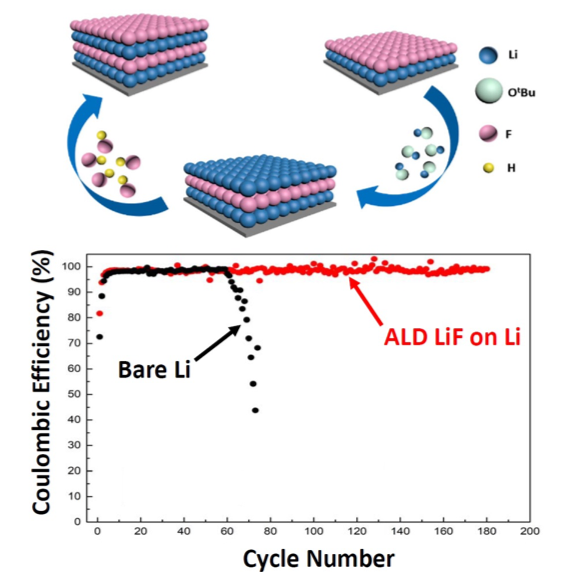
Scientific Achievement
The team developed an atomic layer deposition (ALD) method to deposit lithium fluoride (LiF) films on lithium metal anodes. These LiF films enable a stable Coulombic efficiency as high as 99.5% for over 170 cycles, about 4 times longer than that of bare lithium anodes.
Significance and Impact
This new ALD process not only offers a promising avenue to implement lithium metal anodes for high capacity batteries, but paves the way for future studies to investigate failure and evolution mechanisms of the solid electrolyte interphase (SEI) on anodes such as graphite, silicon and lithium.
Research Details
- The ALD uses lithium tert-butoxide and HF-Pyridine at 150°C and yields crystalline, highly conformal, and stoichiometric LiF films at 0.8 Å/cycle with >99% purity.
- Nanoindentation measurements reveal a shear modulus of 58 GPa, seven times higher than the sufficient value to resist lithium dendrites.
- In contrast to bare lithium, lithium anodes with an 8 nm LiF coating remain smooth and dendrite-free even after 160 charge-discharge cycles.

